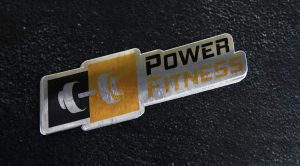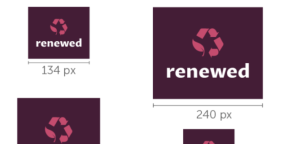Are you looking to grow your brand and increase customer loyalty? If so, you may want to consider implementing a brand funnel. A brand funnel is a customer journey model that measures the awareness of the market and each step the market takes towards brand loyalty, then advocacy. It is a strategic tool that offers invaluable insights into the trajectory of customer engagement.
In an ideal world, every brand would appeal to every consumer that encountered it, maximizing turnover and profits for businesses. However, this isn’t how things work in reality. A brand funnel measures the progress of customers throughout your purchasing journey, allowing you to identify areas where you may be losing potential customers and make adjustments to improve your brand’s appeal. By understanding the different stages of a brand funnel, you can create targeted marketing campaigns that move customers through the funnel towards brand loyalty and advocacy.
Understanding the Importance of Brand Funnel
If you want to grow your business, you need to understand your customer’s journey from awareness to advocacy. This journey is what we call the brand funnel. By mapping out this journey, you can identify the strengths and weaknesses of your brand and optimize your marketing efforts accordingly.
Role in Business Growth
The brand funnel is a powerful tool for driving business growth. By measuring the awareness of the market and each step the market takes towards brand loyalty and advocacy, you can identify opportunities to improve your brand’s performance at each stage. This can lead to increased customer engagement, higher conversion rates, and ultimately, greater revenue.
Impact on Customer Journey
The brand funnel plays a critical role in shaping the customer journey. By understanding how customers interact with your brand at each stage of the funnel, you can optimize your marketing efforts to better meet their needs and expectations. This can help you build stronger relationships with your customers, increase their loyalty, and ultimately, drive greater revenue for your business.
To make the most of the brand funnel, it’s important to have a clear understanding of the different stages and how they impact the customer journey. By focusing on each stage and optimizing your marketing efforts accordingly, you can build a stronger, more effective brand that drives growth and success for your business.
Steps in the Brand Funnel
The brand funnel is a model that helps businesses understand how customers move along the journey and the stages they go through along the way. The brand funnel has five stages: Awareness, Consideration, Conversion, Loyalty, and Advocacy.
Awareness
The first stage of the brand funnel is Awareness. This is where a potential customer becomes aware of a business’s products or services. In this stage, a brand will aim to generate as much interest as possible. This can be done through various marketing channels such as social media, advertising, and content marketing.
To increase awareness, businesses can use tactics such as influencer marketing, search engine optimization (SEO), and paid advertising. It is important to note that the goal of this stage is not to make a sale, but to generate interest and awareness of the brand.
Consideration
The second stage of the brand funnel is Consideration. In this stage, potential customers are considering whether or not to purchase from the brand. This is where businesses need to provide more information about their products or services and why they are the best choice.
To increase consideration, businesses can use tactics such as email marketing, retargeting ads, and social proof. Social proof can be in the form of customer reviews, testimonials, and case studies.
Conversion
The third stage of the brand funnel is Conversion. This is where potential customers become paying customers. In this stage, businesses need to make it as easy as possible for customers to make a purchase. This can be done by optimizing the checkout process, providing multiple payment options, and offering free shipping or discounts.
To increase conversion, businesses can use tactics such as abandoned cart emails, exit-intent popups, and urgency tactics such as limited-time offers.
Loyalty
The fourth stage of the brand funnel is Loyalty. This is where businesses aim to turn one-time customers into repeat customers. In this stage, businesses need to provide an exceptional customer experience to encourage customers to come back.
To increase loyalty, businesses can use tactics such as loyalty programs, personalized emails, and exclusive offers for repeat customers.
Advocacy
The final stage of the brand funnel is Advocacy. This is where businesses aim to turn loyal customers into brand advocates. In this stage, businesses need to encourage customers to share their positive experiences with others.
To increase advocacy, businesses can use tactics such as referral programs, social media sharing buttons, and user-generated content campaigns.
Overall, the brand funnel is a powerful tool for businesses to understand the customer journey and optimize their marketing efforts at each stage. By focusing on each stage and providing the right information and experience, businesses can increase their chances of success and turn customers into loyal advocates.
Optimizing the Brand Funnel
If you’re looking to grow your business, optimizing your brand funnel is a must. By doing so, you can increase customer loyalty, generate more leads, and ultimately boost your revenue. Here are some effective strategies to optimize your brand funnel:
Effective Marketing Strategies
One of the most important aspects of optimizing your brand funnel is to use effective marketing strategies. This includes creating compelling content that resonates with your target audience, leveraging social media platforms, making use of white label services and utilizing paid advertising campaigns.
Customer Experience Enhancement
Another key aspect of optimizing your brand funnel is to enhance the customer experience. This involves creating a seamless user experience across all touchpoints, including your website, social media channels, and email campaigns. By providing a positive customer experience, you can increase customer satisfaction and loyalty, and ultimately drive more conversions.
Leveraging Digital Platforms
Finally, leveraging digital platforms is essential for optimizing your brand funnel. This includes using tools like Google Analytics to track user behavior and identify areas for improvement, as well as utilizing marketing automation software to streamline your marketing efforts. By leveraging these platforms, you can gain valuable insights into your customers’ behavior and preferences, and use this information to optimize your brand funnel for maximum results.
In conclusion, optimizing your brand funnel is essential for growing your business and increasing revenue. By using effective marketing strategies, enhancing the customer experience, and leveraging digital platforms, you can create a funnel that drives more conversions and generates more revenue.
Case Studies of Successful Brand Funnels
Are you curious about how successful companies use brand funnels to grow their businesses? Here are a few examples of companies that have implemented successful brand funnels:
Example 1: HubSpot
HubSpot is a software company that provides marketing, sales, and customer service software. Their brand funnel is designed to attract customers through educational content, convert them into leads through gated content, and then nurture them through email campaigns until they become customers.
One of the key components of HubSpot’s brand funnel is their blog, which provides educational content on topics related to marketing, sales, and customer service. By providing valuable content to potential customers, HubSpot is able to attract them to their website and build trust.
Once a visitor is on their website, HubSpot uses gated content, such as ebooks and whitepapers, to convert them into leads. In exchange for the content, visitors are required to provide their contact information.
Finally, HubSpot uses email campaigns to nurture their leads until they become customers. By providing targeted content based on the lead’s interests and behavior, HubSpot is able to move them through the funnel and convert them into paying customers.
Example 2: Nike
Nike is a global brand that offers athletic footwear, apparel, and accessories. Their brand funnel is designed to create brand awareness, build an emotional connection with their customers, and ultimately drive sales.
One of the key components of Nike’s brand funnel is their advertising campaigns, which are designed to create brand awareness and build an emotional connection with their customers. Nike’s “Just Do It” campaign is a great example of this, as it encourages customers to push themselves to achieve their goals.
Once a customer is aware of Nike and has an emotional connection to the brand, Nike uses targeted advertising and email campaigns to drive sales. By providing personalized recommendations based on the customer’s interests and behavior, Nike is able to convert them into paying customers.
Example 3: Apple
Apple is a technology company that offers a range of products, including smartphones, laptops, and tablets. Their brand funnel is designed to create brand awareness, build trust with their customers, and ultimately drive sales.
One of the key components of Apple’s brand funnel is their retail stores, which are designed to provide a unique and memorable experience for their customers. By providing a hands-on experience with their products, Apple is able to build trust with their customers and differentiate themselves from their competitors.
Once a customer has visited an Apple retail store and has built trust with the brand, Apple uses targeted advertising and email campaigns to drive sales. By providing personalized recommendations based on the customer’s interests and behavior, Apple is able to convert them into paying customers.
These are just a few examples of companies that have implemented successful brand funnels. By understanding how these companies use brand funnels to grow their businesses, you can apply these strategies to your own brand and achieve similar success.
Future Trends in Brand Funnels
As technology and consumer behavior continue to evolve, so do brand funnels. Here are some future trends to keep an eye on:
1. Personalization
Personalization is becoming increasingly important in all aspects of marketing, and brand funnels are no exception. By tailoring the customer journey to each individual’s needs and preferences, brands can create a more engaging and effective funnel. This can include personalized content, product recommendations, and even customized pricing.
2. Multi-Channel Funnel
As consumers interact with brands across multiple channels, from social media to in-store experiences, brand funnels will need to become more multi-dimensional. This means tracking and analyzing customer behavior across all touchpoints, and creating a seamless journey from one channel to the next.
3. Emphasis on Advocacy
While loyalty has always been a key goal of brand funnels, the focus is shifting towards advocacy. Brands are realizing the power of happy customers who not only continue to buy from them but also recommend them to others. As a result, brand funnels will increasingly prioritize creating brand advocates through exceptional customer experiences and social proof.
4. Data-Driven Insights
As with all marketing strategies, data will continue to play a crucial role in brand funnel optimization. However, the focus will shift towards using data to gain deeper insights into customer behavior and preferences. Brands will increasingly use AI and machine learning to analyze data and create more personalized and effective funnels.
5. Sustainability and Social Responsibility
Consumers are increasingly looking for brands that align with their values, particularly when it comes to sustainability and social responsibility. As a result, brand funnels will need to incorporate messaging and actions that demonstrate a commitment to these issues. This can include everything from eco-friendly packaging to charitable donations.
Overall, the future of brand funnels is exciting and full of potential. By keeping up with these trends and incorporating them into your strategy, you can create a more engaging and effective funnel that drives growth and loyalty for your brand.
Conclusion: Maximizing the Power of Brand Funnels
Congratulations! You now have a solid understanding of what a brand funnel is and how it can help you measure and grow your brand. By using a brand funnel, you can gain valuable insights into the behavior of your target audience and identify areas where you can improve your brand’s performance.
To maximize the power of your brand funnel, keep the following tips in mind:
- Use a consistent set of metrics to measure your brand’s performance at each stage of the funnel.
- Continuously monitor your brand’s performance and adjust your marketing strategies as needed.
- Focus on building strong relationships with your customers and creating a positive brand image.
- Use a balanced marketing strategy that combines upper-funnel brand-building efforts with mid- and lower-funnel efforts.
- Leverage the power of technology to automate your marketing campaigns and streamline your processes.
Remember, a brand funnel is just one tool in your marketing arsenal. To achieve lasting success, you need to use a variety of strategies and tactics to connect with your target audience and build a strong, recognizable brand.
So, go ahead and put your newfound knowledge to work. By using a brand funnel to measure and grow your brand, you can take your marketing efforts to the next level and achieve long-term success.
Marietta Arnold is a branding and design enthusiast who draws inspiration from hobbies like hiking, photography, and art exploration. With a background in graphic design, she shares insights on branding strategies and logo design trends. Stay updated with Marietta’s work for the latest in branding and design.



